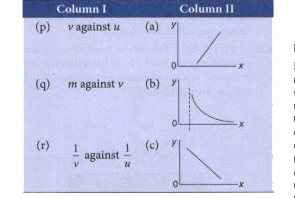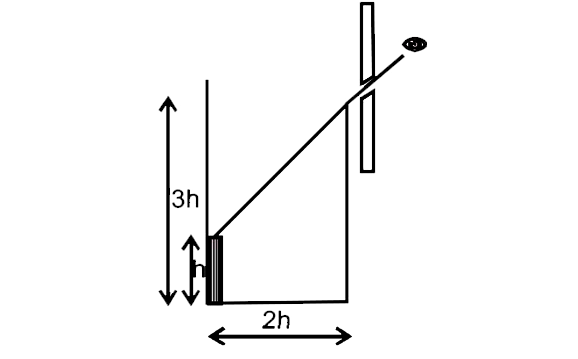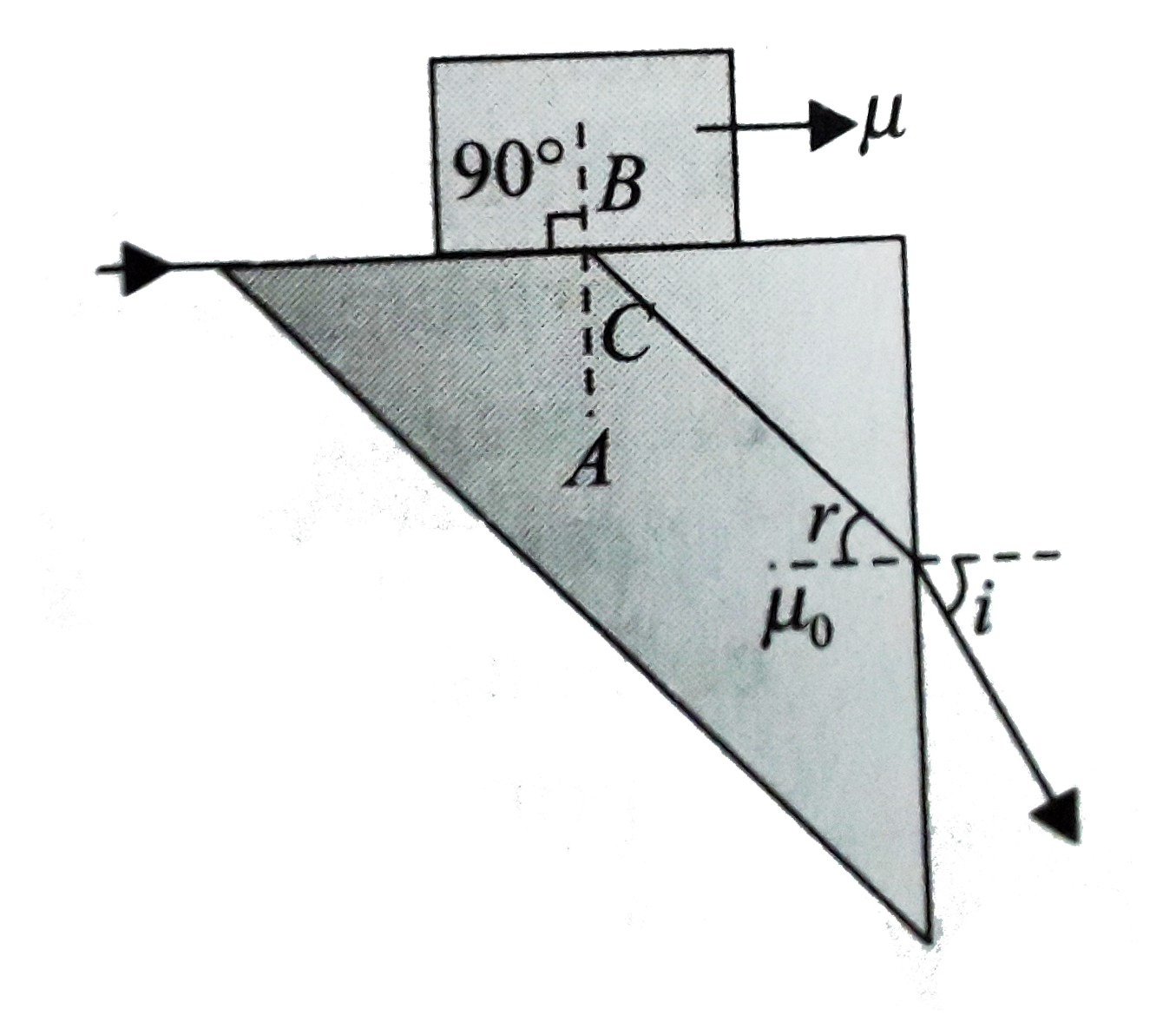Complete Solutions to OLYMPIAD AND NSE LEVEL EXCERCISES of chapter REFRACTION OF LIGHT of Class 10 book with complete answers and questions
| Class 10 | PHYSICS |
| Chapter | REFRACTION OF LIGHT |
| CENGAGE PHYSICS | OLYMPIAD AND NSE LEVEL EXCERCISES |
| Number Of Questions | 10 |
| Academic Year | 2023-24 |
The graphs given apply to a convex lens of focal length f, producing a real image at a distance V from the optical center when self-luminous object is at distance u from the optical center. The magnitude of magnification is m. Match the graphs in Column II with the quantity names in Column I being plotted. Assume object distance greater than focal length.
 View Solution
View SolutionA glass prism `(mu = 1.5)` is dipped in water `(mu = 4//3)` as shown in figure. A light ray is incident normally on the surface AB . It reaches the surface BC after totally reflected, if
 02:08View Solution
02:08View SolutionAn observer can see through a pin-hole the top end of a thin rod of height h, placed as shown in the figure. The beaker height is 3h and its radius h. When the beaker is filled with a liquid up to a height 2h, he can see the lower end of the rod. Then the refractive index of the liquid is
 06:39View Solution
06:39View SolutionPulfrich refractometer is used to measure the refractive index of solids and liquid. It consist of right angled prism. A having its two faces perfectly plane. One of the face is horizontal and the other is vertical as shown is figure. The solid B whose refractive index is to be determined is taken having two faces cut perpendicular to one another. Light is incident in a direction parallel to the horizontal surface so that the light entering the prism A is at critical angle C. Finally, it emerges from the prism at an angle i. Let the refractive index of the solid be `mu` and that of the prism A be `mu_(0)` (which is known). Here `mu_(0)gtmu` and by measuring i, `mu` can be determinged.

Q. Refractive index of the solid `(mu)` in terms of `mu_(0)` and i is03:34View SolutionPulfrich refractometer is used to measure the refractive index of solids and liquid. It consist of right angled prism. A having its two faces perfectly plane. One of the face is horizontal and the other is vertical as shown is figure. The solid B whose refractive index is to be determined is taken having two faces cut perpendicular to one another. Light is incident in a direction parallel to the horizontal surface so that the light entering the prism A is at critical angle C. Finally, it emerges from the prism at an angle i. Let the refractive index of the solid be `mu` and that of the prism A be `mu_(0)` (which is known). Here `mu_(0)gtmu` and by measuring i, `mu` can be determinged.

Q. Refractive index of the solid `(mu)` in terms of `mu_(0)` and i is03:34View SolutionAssertion `:` If the angles of the base of the prism are equal, then in the position of minimum deviation, the refracted ray will pass parallel to the base of prism.
Reason `:` In the case of minimum deviation, the angle of incidence is equal to the angle of emergence.03:45View SolutionA rectangular glass slab ABCD, of refractive index `n_(1),` is immersed in water of refractive index `n _(2) (n _(1) gt n _(2)).` A ray of light in incident at the surface AB of the slab as shown. The maximum value of the angle of incidence `alpha_(max),` such that the ray comes out only from the other surface CD is given by
View SolutionA convex lens of focal length f is placed somewhere, in between an object and a screen. The distance between the object and the screen is x. If the numerical value of the magnification produced by the lens is m, then the focal length of the lens is
View SolutionA glass slab of thickness `3cm` and refractive index `3//2` is placed on ink mark on a piece of paper. For a person looking at the mark at a distance `5.0 cm` above it, the distance of the mark will appear to be
02:16View SolutionA lens ( focal length `50 cm` ) forms the image of a distant object which subtends an angle of 2 milliradian at the lens. What is the size of the image ?
03:26View Solution
OLYMPIAD AND NSE LEVEL EXCERCISES questions and complete solutions for chapter REFRACTION OF LIGHT of CENGAGE PHYSICS of Class 10
